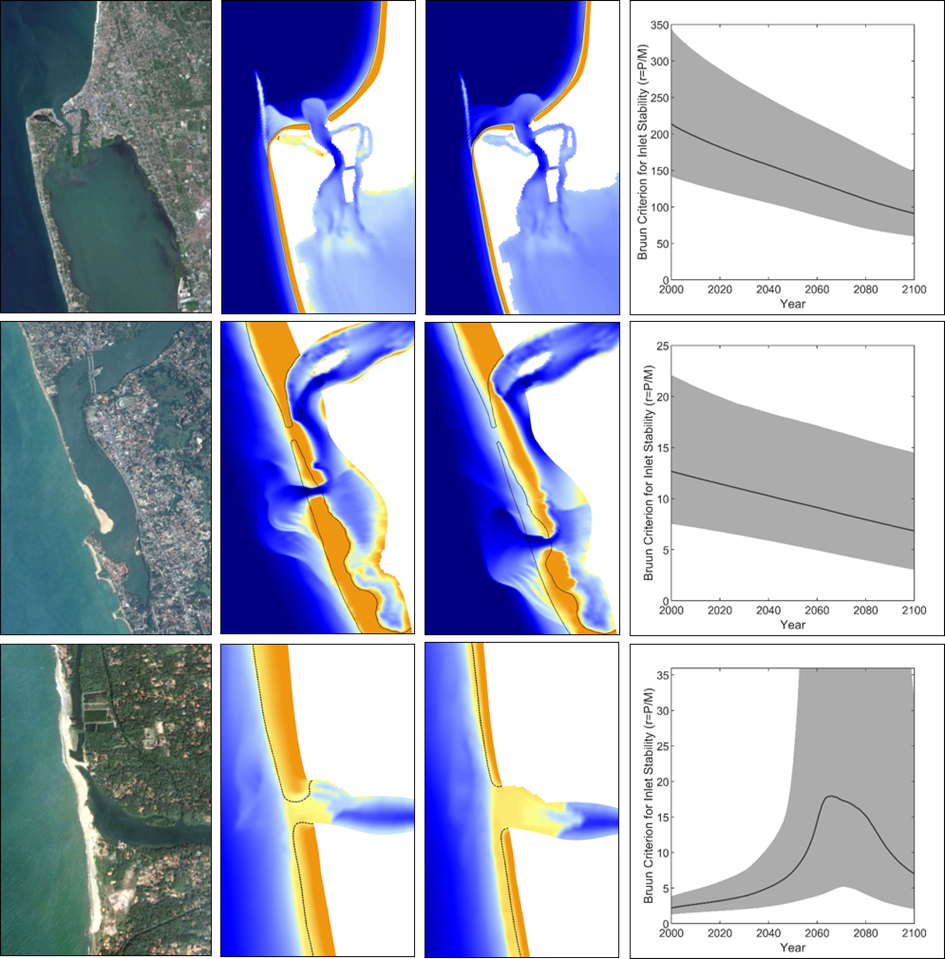Modelling Coastal Hazards and Climate Change Impacts on coasts
I am Trang Duong, an Assistant Professor in the Marine and Fluvial Systems group, in Civil Engineering disciplinary, working on the Sector Plan position “Numerical methods and numerical models for coastal hydraulics”. My research focuses on coastal and tidal inlet processes, climate change impacts on coasts, coastal hazards and nature-based solutions for adapting to climate change in coastal areas.
Background
My first experience with process-based numerical models to study coastal processes was during my Msc study on the role of infra-gravity waves in fringing reefs, which was one of the first applications of the Xbeach model for reef environments. This had initiated my interest and curiosity in physical understanding of coastal processes and system modelling. For my PhD, I therefore continued to gain insight into the physical processes in highly dynamic systems, namely Small Tidal Inlets (STIs) through detailed numerical morphodynamic modelling. In this research I also extended my knowledge to climate change and studied the potential impacts of climate change on these STIs with respect to inlet stability. We developed a strategic modelling framework for climate change impact study to project the future morphological evolution of these systems and their stability. Besides process-based models, I am also interested in developing “reduced complexity” models, allowing rapid assessment and probabilistic application, including models to project the stability of inlets and models to project the evolution of coastlines interrupted by inlets on a time scale of a century. These probabilistic projections account for the uncertainties associated with climate change studies. This is useful for designing effective adaptation strategies for coastal areas in the vicinity of these inlets.

In addition to these coastal morphodynamic hazards, I have also been working on a detailed coastal flood hazard assessment and global storm surge projections using the latest unstructured grid model Delft3D-FM. Here, my focus is on enabling accurate high resolution coastal flood modelling due to extreme sea levels, comprising tides, storm surges and waves. Through my ongoing research with a PhD student, I aim to incorporate the vertical land motion (subsidence or uplift) component to support coastal flooding estimates. With another PhD student, we are developing an efficient modelling framework, which involves the integration of several numerical models, to model the long-term effects of nature-based solutions to salt intrusion in estuaries in view of climate change. Another PhD topic is the development of models for simulating the dynamics of living dykes and tools for designing these dykes, which are covered with grass and with fronted coastal wetlands.
I believe that “together we can prepare for a better future”. With the help of advanced modelling technique, we can expand our physical insights, predict potential impacts of climate change, and estimate the associated risk in order to aid decision making and adaptive planning for safe coastal communities and a more sustainable future.
In the years to come
I wish to continue developing or improving various types of numerical models, ranging from sophisticated process-based numerical models, to reduced complexity models, and to data-driven models; as well as applying these models widely to many more different cases, both in deterministic and probabilistic manner, in local, regional and global scale study, to gain more physcical knowledge at different environments and to also improve the model robustness. I also wish to develop hybrid, multi-disciplinary modelling framework which is the combination of physical models vs making use of remote sensing.
For example, with the inlet topic, I wish to further apply the developed modelling framework (the numerical model and the reduced complexity model) to many other STIs worldwide; to develop similar modelling framework for different inlet types (e.g. bigger systems); and with the support of remote sensing to identify these inlet systems globally to eventually build a regional/global database in this regard. In terms of coastal hazards, such as flooding, I wish to improve coastal flooding projections, by incorporating vertical land motion at coastal areas at various spatial scales from local to regional and global scale. Improved flooding estimates will help increase the safety of valuable assets and inhabitants at coastal areas.
I also wish to contribute in knowledge transfer to students, junior peers; as well as knowledge application and exchange internationally, especially in developing world to support practical problem-solving challenges and to really make a difference.
Education
Alongside with my research, I teach in various courses at the UT, including the Civil Engineering master course Long waves and Tidal Morphodynamics, which deals with the qualitative and quantitative understanding of hydrodynamic and morphodynamic processes associated with long waves and tides; and the master course Hydraulic modelling, which focusses on different types of hydraulic models. Furthermore, I also supervise both bachelor and master students for their graduation projects.
Collaborations
Throughout my research, I have been collaborating and/or working closely with national partners, such as IHE Delft, Deltares, TU Delft, Dutch Ministry of Infrastructure and Water Management, partners of ongoing research projects; as well as with international partners, like partners from big consortium proposals and projects, Universities and research institutes in the global South including Vietnam, Sri Lanka, Indonesia, Thailand, The University of Queensland and CSIRO, Australia, Le Centre national de la recherche scientifique CNRS, France, Joint Research Centre, European Commission.

